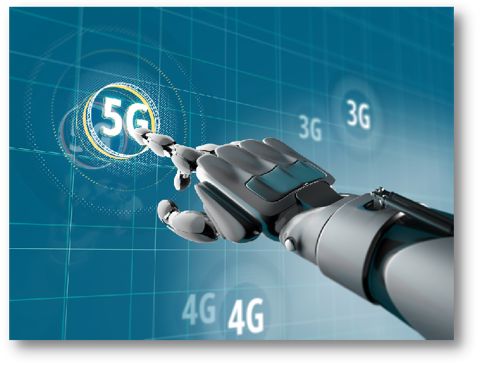The World Mobile Congress (MWC) in Barcelona this year is full of exciting product announcements and announcements. Although a few products are trying to rekindle the classics, like the Nokia 8110 4G mobile phone was retrofitted from the original "Matrix" movie, but most of the products are looking to the future. Two of these technologies represent, in particular, the future of the mobile world: artificial intelligence (AI) and 5G communications. But what is the connection between these two fields? Continue reading the following article to find the answer.

5G+AI=Future
Artificial intelligence is the most popular pop word, but how much authenticity is there?
Artificial intelligence is a huge business opportunity. According to KPMG statistics, artificial intelligence and machine learning earned a $12 billion VC in 2017, which has doubled from the previous year. But as with every hot trend, the use of the word goes far beyond its true meaning. Do not misunderstand what I mean. Artificial intelligence is changing the world from self-driving vehicles and robots to smart speakers and headphones. However, many products use artificial intelligence as a selling point, but in reality they are based on well-written algorithms, so it is very important to distinguish between popular vocabulary and reality.
The use of artificial intelligence may not be to create a humanoid machine that is as powerful as a human being in the movie "Humans" or a robot in "Westworld." It can be applied to more general and more professional applications. But to be recognized as artificial intelligence, it will include a learning process and generate a result that may not be achieved through simple brutal calculations. This type of artificial intelligence is becoming very common, especially around deep learning and neural networks, and many of the technologies they drive are used by millions of people every day.
5G Challenge: Extremely high speed with high complexity
Another huge topic of MWC is 5G. My colleagues gave a good overview of the 5G situation in mid-2017, and it is impressive to see how far 5G technology has developed. 5G is expected to become a revolutionary technology that will drive the development of applications such as self-driving vehicles, smart homes and smart cities, mobile augmentation and virtual reality, and 4K video streaming applications. This expectation has continued for some time. Now, the potential of 5G is beginning to crystallize.
One example is Nokia's recent announcement that ReefShark Soc is ready to meet 5G challenges, including the CEVA-XC architecture for wireless communications. According to Reuters, even President Donald Trump’s security team hopes to accelerate the start of the US’s 5G network construction as a countermeasure against threats from overseas networks and economic security. It is now safe to say that everyone knows that 5G is the future of communications.
There are many reasons why 5G is satisfactory. Its bandwidth will be much larger than 4G, and it can support streaming media content that was previously unavailable. The reliability is greatly enhanced, enabling critical missions and extremely low latency scenarios such as automatic driving. It will also significantly increase the number of connectable devices, which will grow exponentially to form the Internet of Things (IoT). Therefore, from the smallest sensor in the home to the most complex automated vehicle, all will benefit from 5G technology.
Extremely complex calculations can also cause problems. For example, millimeter wave band technology up to 60 GHz, large-scale MIMO (multi-input and multiple-output support for 64-256 antennas) and low-band sub-6 GHz frequencies introduce new challenges and a lot of complexity to the 5G physical layer (PHY). Linear calculations. In addition to all these complexities, the 5G definition has not been officially standardized. The 5G new air interface (NR) release-15 is the latest release of 3GPP, but currently all chips must maintain the flexibility to support release-16, as well as other versions not of the 3GPP standard. Meeting these requirements requires a completely new approach to the past.
A TPU Screen Protector made of the super toughness of the honeycomb structure. Its unique ultra-soft properties allow it to cover the most complex curves and contours in a device.
The self-healing design of the Hydrogel Screen Protector can protect the display screen of the device from damage, leave no air bubbles, and maintain the sensitivity of the touch screen. Advanced anti-fingerprint and dust- and oleophobic overlays keep your screen smudge- and dirt-free. This overlay is also important in providing maximum touch sensitivity for improved high-speed glide and optimal touch response.
The optical transparency of the Hydrogel Film is more than 90%, showing you the most original screen color and bringing the most realistic visual experience.
If you want to know more about the product information of the Hydrogel Screen Protector for iPhone, please click the product details to view the parameters, model, picture, price and other information of the iPhone Screen Protector.
Whether you are a group or an individual, we will do our best to provide you with accurate and comprehensive information about Hydrogel Screen Protectors!
Screen Protector For iPhone,Hydrogel Film for iPhone,Hydrogel Screen Protector For iPhone,TPU Screen Protector For iPhone,iPhone Screen Protector
Shenzhen Jianjiantong Technology Co., Ltd. , https://www.mct-sz.com